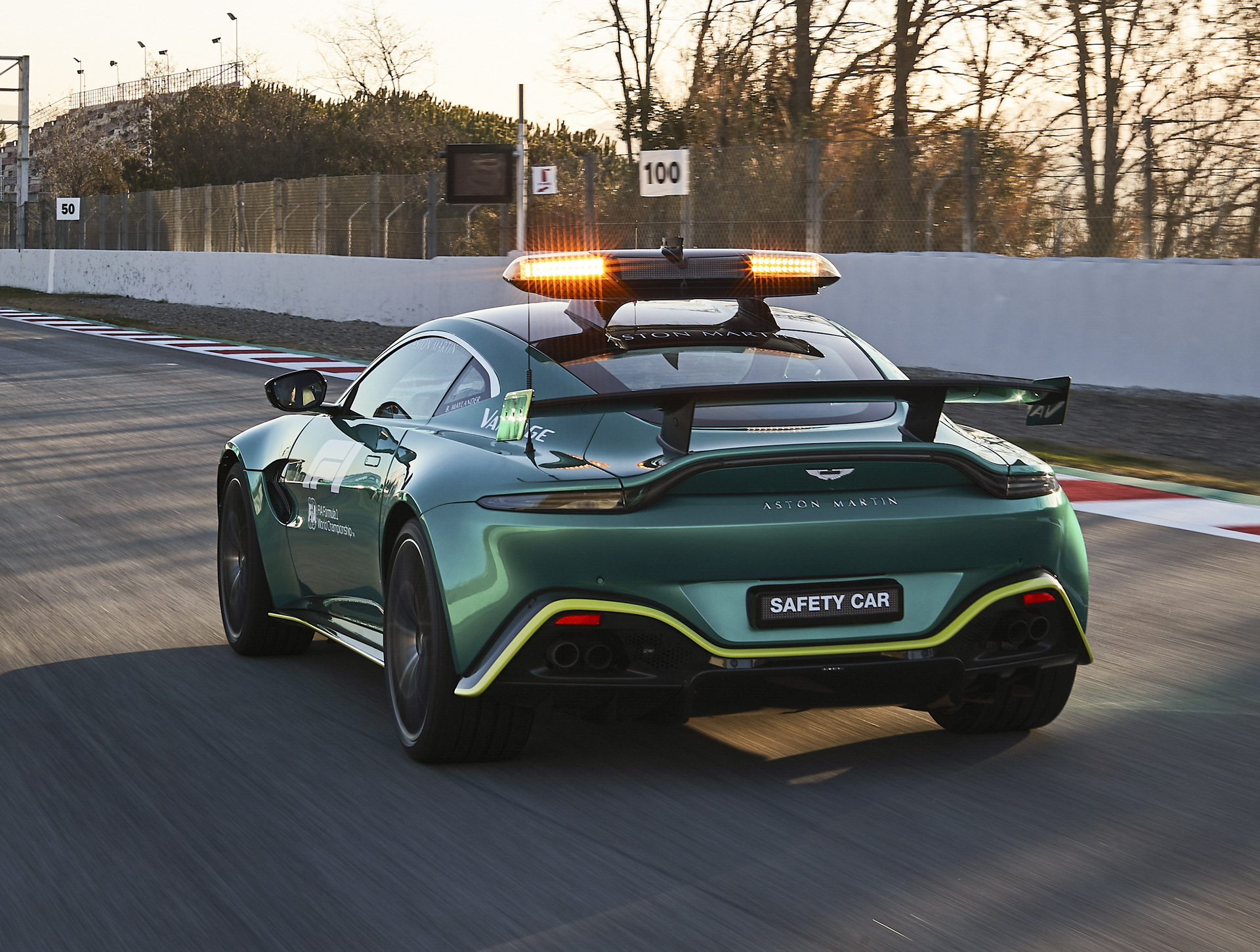Aston Martin is having a bad time in Formula 1. Not only is its race car off the pace, but so is the Safety Car it has proudly put out into the field. The drivers have complained so much that the FIA has been forced to release a statement in its defense.
“The FIA would like to reiterate that the primary function of the FIA Formula 1 Safety Car is, of course, not outright speed, but the safety of the drivers, marshals and officials,” the organization wrote. The speed of the Safety Car is “generally dictated by Race Control, and not limited by the capabilities of the Safety Cars.”
The FIA enumerated goals that might slow the Safety Car down from its theoretical top speed, including bunching up the field, negotiating an incident recovery, or avoiding debris on track. All of which means that the “impact of the speed of the Safety Car on the performance of the cars following is a secondary consideration.”
Read Also: This Aston Martin Vantage Is Formula 1’s New Safety Car
FIA Statement on @F1 Safety Car pic.twitter.com/5p0uHGo6mu
— FIA (@fia) April 14, 2022
The statement follows Max Verstappen’s determination that the Aston Martin Safety Car was “a turtle” and that F1 had to speed it up, per Motorsport.com. And he’s not the only one who has noticed a lack of pace from the car, which made its first appearance for the 2022 season at the Australian Grand Prix.
Indeed, Mercedes’ George Russel noted that the Aston Martin was about five seconds a lap slower than the Mercedes-AMG GT Black Series. Current driver’s championship leader and Ferrari driver, Charles Leclerc, has also noticed the speed gap.
“I wanted to complain, but then I checked how much the safety car was sliding in the corner and I don’t think there was anything more that he could give so I didn’t want to put too much pressure,” said Leclerc, per ESPN. “With the cars that we have now it’s very difficult to keep the temperatures in the tires behind the safety car.”
Even the Safety Car’s driver, Bernd Maylander, a former DTM racer, echoed Leclerc’s statements in an interview with Auto Motor und Sport.
“Of course, it’s nice that Charles Leclerc saw that I was absolutely at the limit. More was not possible with the best will in the world,” Maylander told the outlet.
All of which sounds pretty bad for the Aston Martin Vantage Safety Car, which is powered by a tweaked 4.0-liter twin-turbocharged V8 engine that produces 528 hp (394 kW/535 PS) for its F1 duties. Although that’s plenty, it is significantly less than the Mercedes, which makes 730 hp (544 kW/740 PS) and is, of course, a true racing car.
You would, therefore, expect the Aston Martin to be slower around a lap than its counterpart but it’s still making 2022 an embarrassing year for the Aston Martins at both ends of the Formula 1 field.





